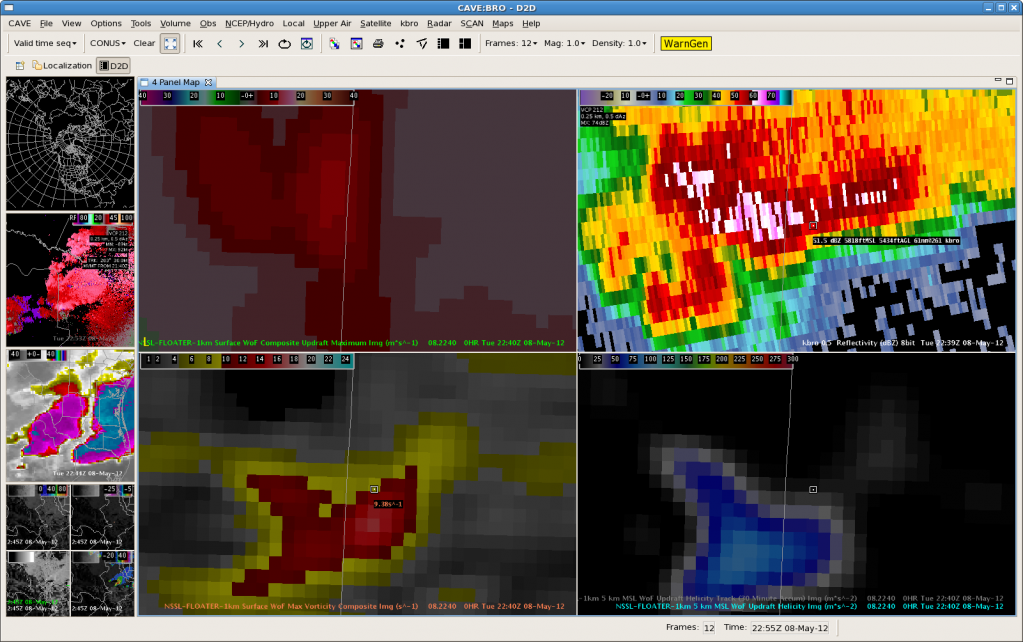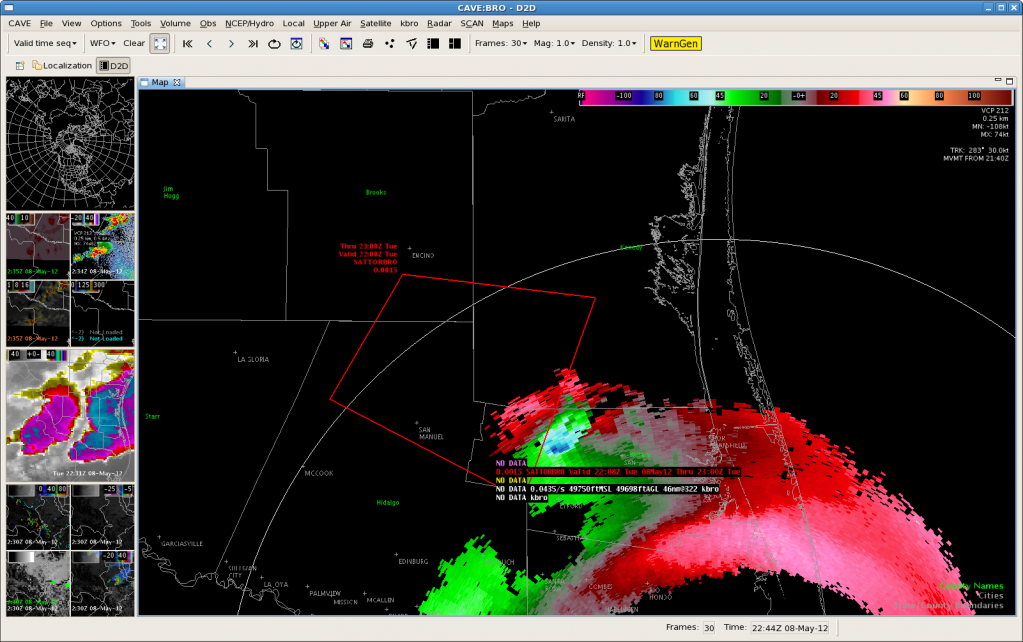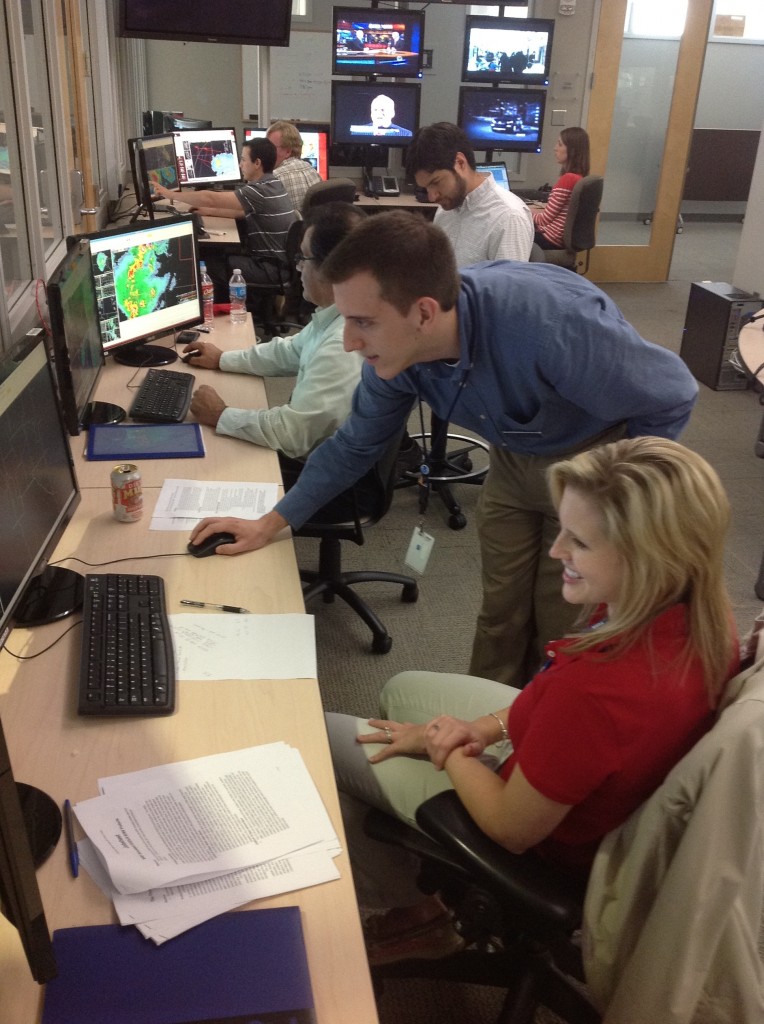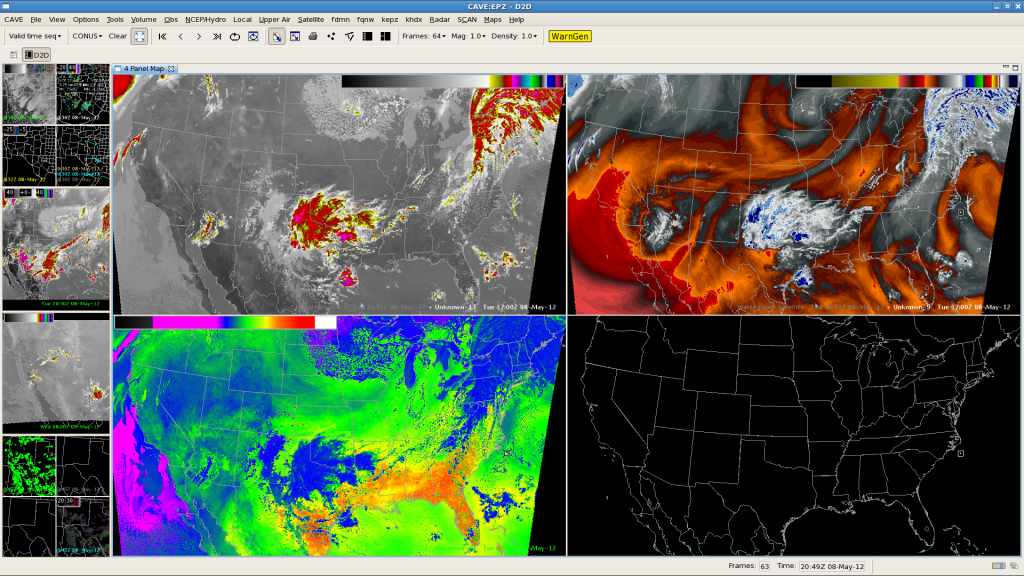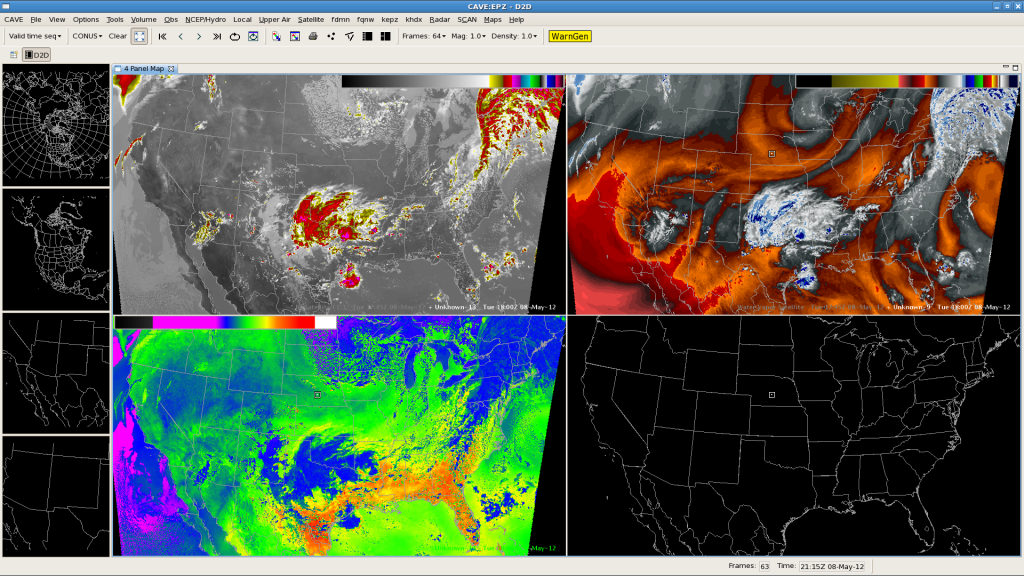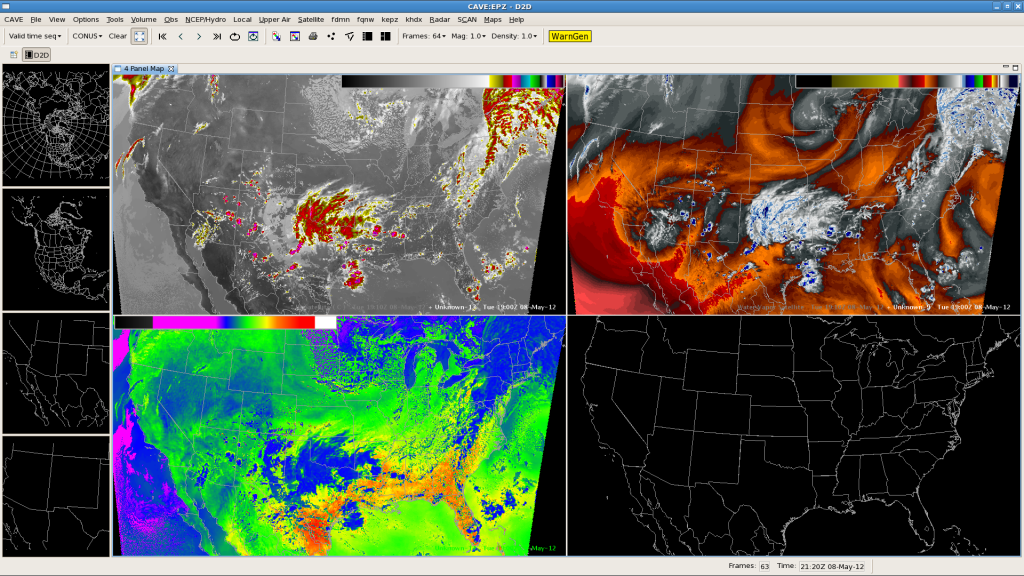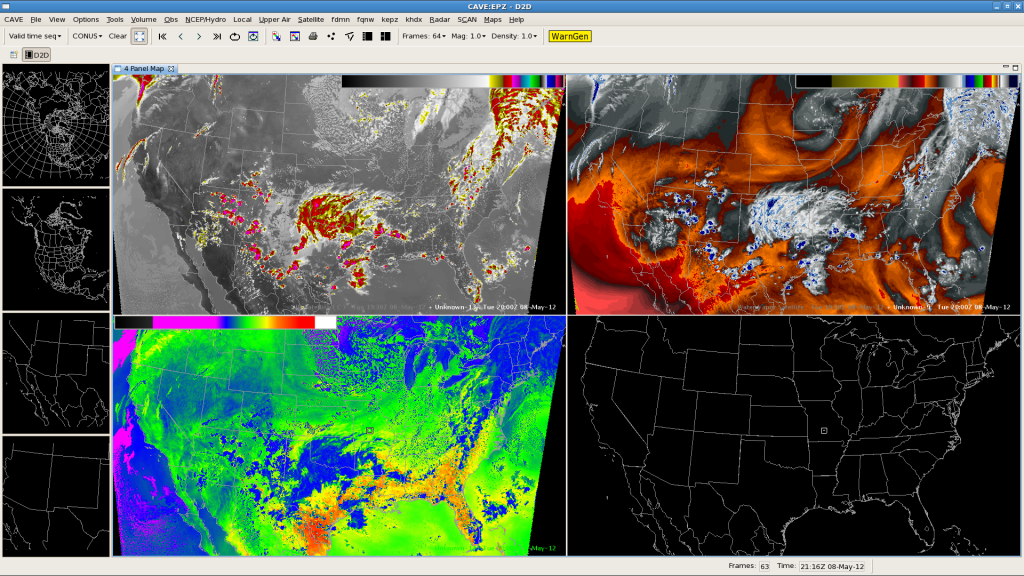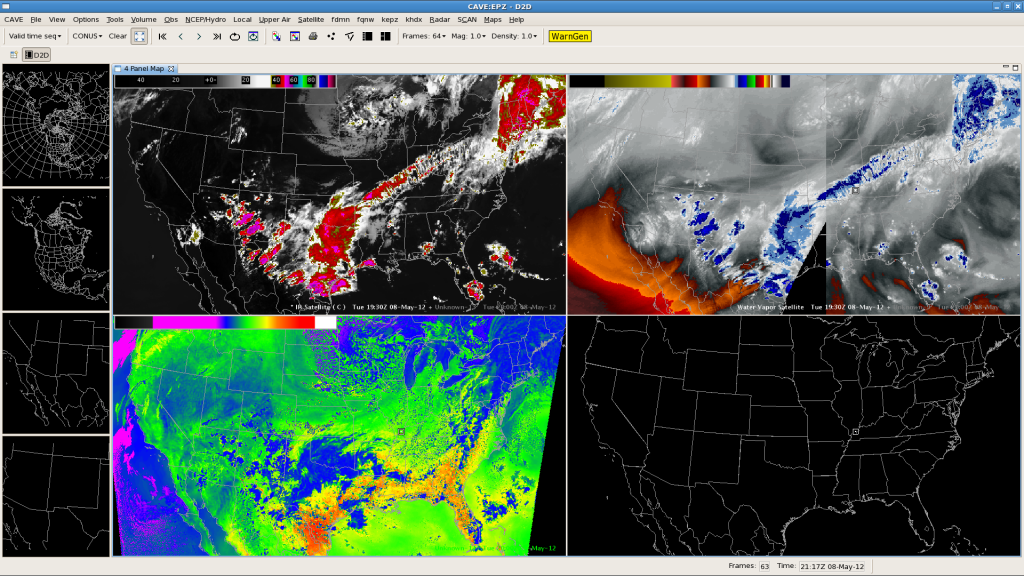Severe/possibly tornadic thunderstorm…currently located over northern Mexico west of BRO…has been showing an increasing trend. Updraft helicity have have increased to 87 m/s2 with surface vorticity values to 16 s-1. It appears a rear flank downdraft has now developed on the south side of the storm. Hovis/Barnes
BRO – Strong storm-top divergence @ 2234z
EWP2012: Pictures from the HWT
BRO – Tornadic Thunderstorm continues @ 2220Z
Possible Tornadic thunderstorm continues to push east across northeast Hidalgo county. Maximum Surface vorticity values have increase to 22 s-1 and updraft helicity values have increase to 447 m/s2. Have not received any reports from this storm. However…it has been moving across an area where not many people live. Hovis/Barnes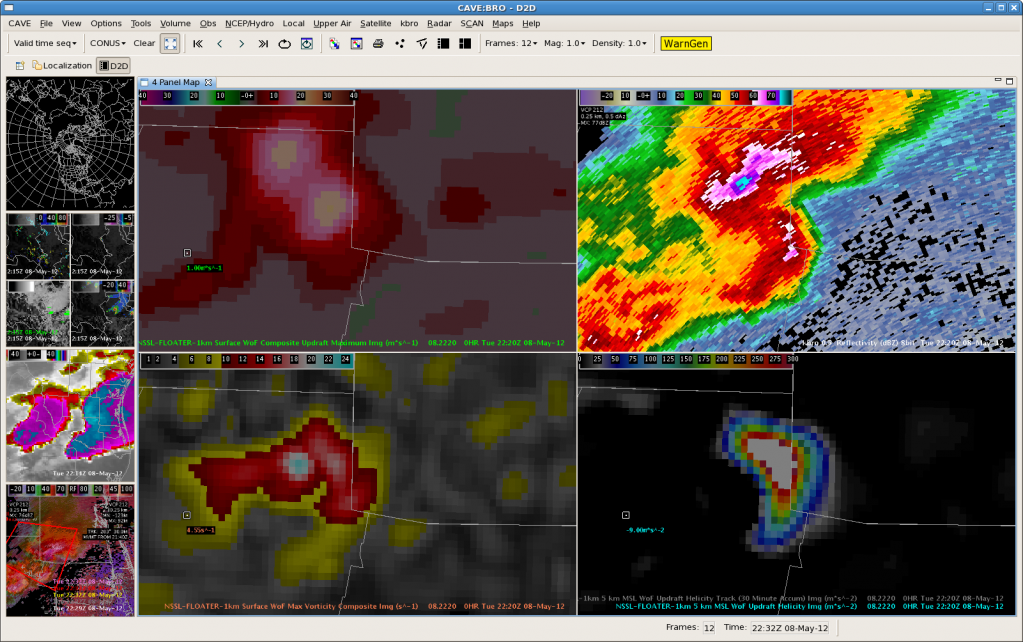
BRO – Tornadic Thunderstorm? @ 2135Z
Impressive storm continues to move east across portions of south Texas. Max Vorticity values have increased to 21.5 s-1…with updraft helicity values to 539 m/s2. Maximum updraft values are much lower than expected with 19 m/s. However…feel these numbers are low because radars are all examining the storm around 7500 ft AGL. Hovi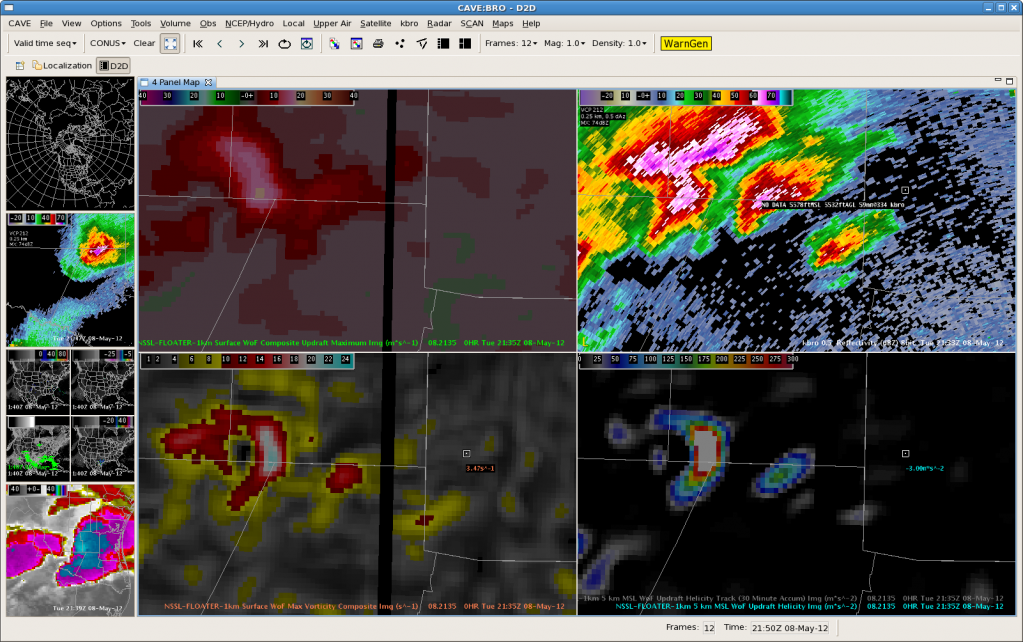 s/Barnes
s/Barnes
EPZ Meso Update 2115Z
The synthetic WRF run at 05082012 at 0Z correctly predicted several upper level features and mesoscales features correctly for the afternoon of 05082012. The following 4 images show synthetic WRF images of IR (upper left), WV (upper right), and 10.35u-12.3u IR Band Difference (lower left). Looking at the WV imagery you can see an upper low over the U.S. Southwest as well as an upper trough over the upper Midwest. In the IR and WV imagery you can see convection occurring from AZ to NM to TX to CO to Old Mexico. In the brighter white areas of IR, you can see low level cloud cover. In the Band Difference image, you can see the area of best moisture and “hot spot” for convective initiation in the southern tip of TX and into Mexico. The 5th image below is the true observed IR (upper left) and WV (upper right) which verifies the synthetic WRF.
This imagery would be very helpful to forecasters in the field because it seems to do a decent job of predicting upper level features, low level clouds, and convection 12-20 hrs in advance.
17Z Synthetic:
18Z Synthetic:
19Z Synthetic:
20Z Synthetic:
20Z Observed IR and WV:
AMS
EPZ Warning Desk update @ 2100Z
thunderstorms were strengthening south central NM. combination of legacy and GOES-R nearcast product support continued development. another area of storms were located just south of Luna and Dona Ana counties and moving north. we expect this activity to hold together and are likely to impact these two counties within the 1-2 hours. nunez

EPZ Meso Update 2050Z
CI products were able to correctly depict a small hail producing t-storm about 1.5 hours ahead of time.
In the first image below, the UAH CI showed a 53 index (upper left) indicating significant cloud growth at 1732Z.
The next image below shows CIMSS CI of -7 to -8 K/15 min at 1745Z (lower left) which is typical of weak storms based on recent studies.
The next image below at 1901Z depicts the same storm, 1.5 hrs later when it first reaches 60 dbz in KEPZ comp reflectivity (upper right) and 77-80 DVIL (lower right). At this point the storm is likely producing small hail.
Another point to take away from this case is that for this environment, it takes about an index of 50 to 60 UAH CI to produce strong storms.
AMS
BRO: The Mexican storm
Here are a couple of FSI images of the storm that is still in Mexico. Definitely a supercell, worthy of a SVR for large hail. TOR? Perhaps. But alas, it is not in the U.S.
Greg Stumpf, EWP2012 Week #1 Coordinator

